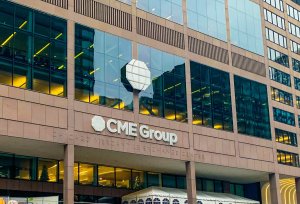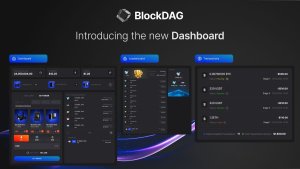Why user experience is key to making U.S. markets more accessible to international traders
As sophisticated traders get younger and their expectations track their experiences, the bar for leading technology providers keeps moving up.

With International and regional equities, and bonds showing a relatively lackluster performance amid inflationary pressures and broader uncertainty, when compared to the U.S., international investors are increasingly being pulled toward U.S. markets.
The U.S. recently has been called the “undisputed home” for trading stocks of rising companies, with market participants outside of the U.S. flocking to American markets. To put that in perspective, the FTSE 100 index was up 3.8% year-over-year, while the S&P 500 moved up almost 25% for 2023. The growing interest in U.S. markets is bolstered by returns, with U.S. equities reaching a total return of 26% for 2023, outpacing non-U.S. developed market equity returns of 19% and emerging markets at 10%.
Global traders and investors want in on U.S. equities and derivatives. The challenge they often face upon onboarding, however, is an age-old lack of coherence and efficiency from platforms that allow them to trade, analyze data and learn about market forces. Historically, traders needed to navigate across multiple platforms, resulting in a less-than-optimal user experience. The experience of trading was time-consuming and often inefficient. A single platform with an intuitive user experience and a range of capabilities—including robust account aggregation, technical research, and in-demand tools—will go a long way to serve younger, digital-first investors.
Why is the quality of this experience important for new users looking to invest in the U.S. market? It’s because the next generation of traders are keen to take active control of their trading and are interested in more sophisticated strategies than their predecessors were. A key example is the explosion of activity among retail and institutional investors in options trading. Options trading grew 478% over the last decade compared to 142% in futures, according to research from the Futures Industry Association.
The next-generation traders typically transact with minimal human input, meaning the platform must be easy to use and efficiently enable a range of strategies to be constructed in different asset classes. In contrast to the friction-laden legacy approach of working across various trading toolsets, a sophisticated platform better caters to a new generation of traders. Such a platform needs certain foundational capabilities. These include access to comprehensive market data, encompassing real-time depth for equities, options, futures, and futures options data. It also needs to allow for seamless account access across asset classes. While many available toolsets offer one or a portion of these capabilities, traders are forever on the lookout for an integrated, comprehensive solution—all in one place.
Customization is also at the heart of building a smooth experience for sophisticated, digital-first generations. To deliver this, leading-edge providers need to provide a suite of innovative tools. These can offer advanced charting and visualization capabilities, the ability to create programmatic strategies without needing a degree in computing, and backtesting capabilities with minimal friction.
The accelerating pace of innovation means integrated access with “everything under one roof” is increasingly becoming table stakes for trading platforms and service providers. As international market participants increasingly pursue the U.S. market, a comprehensive platform will help save traders time and money as they develop winning strategies. In addition, as the average age of a trader gets younger, they will increasingly demand trading experiences combining intelligent tools with user-focused personalized services that enable them to optimize their trading style and experience.
Technology, along with personalized service, is democratizing access to sophisticated trading tools across individual and institutional segments, making it possible to execute sophisticated trades that were once only possible through human interventions. Application programming interfaces (APIs) are becoming a core tool, increasingly utilized by traders to access, manipulate and configure software components from different service providers and seamlessly combine these with technology from other fintech platforms. Newer entrants to trading demand a user experience of ease, simplicity and support that more closely mirrors peer-to-peer payments or purchases made via online marketplaces. In effect, market players rightly demand faster and more efficient self-directed transactions.
If we are prepared to face the barrage of non-U.S. investors betting on U.S. markets, we must ensure they have the tools to do so as seamlessly as possible, supported by proactive levels of personalized service. In the coming years, trading platforms will have to make some strategic decisions to fight for—and retain—market share.

Rustam Lam is Chief Executive Officer of TradeStation International
Rustam started his capital markets career trading for international banks in London and over his 25+ years in the financial markets has held leadership roles at Reuters Group, Townsend Analytics, Lehman Brothers, Barclays Capital and the London Stock Exchange Group. His areas of professional focus have been primarily the delivery of electronic trading and brokerage services for institutional clients and retail traders.









